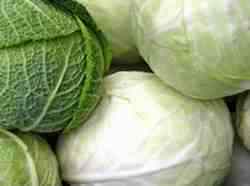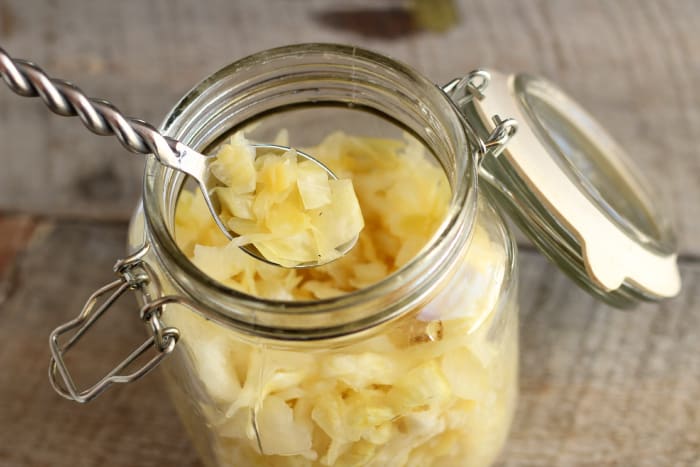Farm Update
 |
| 'Tis the season for cabbage and broccoli! |
What to Expect in Your Share This Week
At the regular drop-offs:
- Choice of cherry tomatoes or Brussels sprouts
- Choice of carrots or a bag of slicing tomatoes
- Choice of broccoli, beets, or leeks
- Choice of of Swiss chard, basil, or lettuce
- Potatoes
- Choice of cabbage or kale
- Choice of zucchini, cucumbers, or onions
For home/workplace delivery:
A Share: B Share:
Cherry tomatoes Brussels sprouts
Carrots Bag of slicing tomatoes
Broccoli Beets
Swiss chard Lettuce
Potatoes Potatoes
Cabbage Kale
Zucchini Cucumber
A Very Kale Dinner
Each season has its own weather patterns that make it hospitable for certain veggies over others, and this is the year for kale. The kale is coming out of the field like gangbusters this season, and we have had it in the shares every week since the beginning of the season. And to tell the truth, I was starting to get a little kaled out, as I am sure some of you are. We were in a kale rut at our house, always preparing it in the same way many times a week, and I was starting not only to not appreciate its hearty, nutritious leafy greenness, but to shoot it dirty looks when I opened up the fridge to more kale again.
So I got an idea, actually inspired by my parents. For the last 25 years or so, my parents have been part of a Gourmet Club consisting of 12 couples that meet monthly at one of their homes, and each couple is responsible for bringing part of the many-course meal. The hosting couple picks a theme and recipes, and over the decades, they've had some pretty creative dinners. They've had dinners where every recipe starts with the same letter of the alphabet, meals where every course features chocolate, and a Julie and Julia dinner where everything on the table came out of Julia Child's Mastering the Art of French Cooking. And that got me thinking... why not a five-course dinner where each part of the meal features kale? That would certainly get us out of our kale rut, and also make for a pretty fun date night in the kitchen. So last night we dropped our kiddos off at Grandma's, got out a ridiculous amount of kale, and got to work. We wanted to do a soup, a salad, a main course, a dessert, and a drink. And here are the results:
The Soup: Fred invented a Summer Tomato Kale soup for the occasion (recipe below). It turned out great, and you could make a dozen variations of it for different effects. You could add chunks of roasted tomatoes for more texture, or you could throw in beans and cayenne pepper and make it a chili... the possibilities are endless!
The salad: Fred was also in charge of the salad, which was a phenomenal kale salad with apples, thick-sliced bacon, red shallots, and a maple syrup vinaigrette. To make this salad, take some torn up kale leaves and rub them with a tiny bit of salt until they are just a little bit more tender. Then add lightly sauteed chunks of shallot, fresh apples, and thick-sliced bacon, along with a really simple dressing made from two parts maple syrup to one part white vinegar.
The main course: This was also amazing! We made grilled pork chops on a bed of sauteed kale, and topped it with more shredded kale, apple slices, and a really awesome apple-blueberry sauce. Fred cooked the sauce until the blueberries took on an almost fig-like quality, which really complemented the flavors in the pork chop. This was over-the-top awesome, and you'll have to ask Fred how to reproduce the results, because his is a particular type of kitchen magic that I just don't possess.
The dessert: While Fred was in charge of the first few courses, the dessert was my domain, so I found a recipe on Pinterest for Kale and Apple Cake with Apple Icing. It turned out to be pretty delicious, and not at all kale-y. It had a moist and spongy texture, and only a very slightly green color from the kale. I'd definitely make it again, and I probably will next time I see way too much kale in the fridge. :-)
The drink: While browsing Pinterest for kale-based desserts and drinks, I came across dozens of delicious looking green smoothies that all contained kale. But I was in the mood for something more conducive to sipping after dinner along with my Kale and Apple Cake, so I made a kale and mint green tea. At first I was really not sure what to expect, but it was actually pretty good. I just boiled some water and steeped two kale leaves, a handful of fresh mint, and one green tea bag for several minutes. Then I added honey to taste, and served it along with my cake. It had a nice earthy flavor, and the mint balanced it out really well. If you're going to make it, I'd definitely add honey or a sweetener of some sort, because I don't think it would have been as good without it. But all in all, it was an experiment that turned out well.
So that was our adventure in theme dinners, and it was a success! We tried kale in several new ways (in the case of the tea and the cake, probably ways we never would have tried otherwise). I'd highly recommend giving it a try sometime, because we actually didn't use the startling amount of kale we thought we would to put this dinner on the table. All in all, it was probably about a bunch and a half of kale for the two of us (and we have a ton of leftovers in the fridge now), so it should be completely doable even for the average family that doesn't have kale coming out of its ears and falling out of the fridge every time you open the door. So give it a try, or at least try one or two of the recipes, and you'll probably have a renewed appreciation for this season's star veggie!
Each season has its own weather patterns that make it hospitable for certain veggies over others, and this is the year for kale. The kale is coming out of the field like gangbusters this season, and we have had it in the shares every week since the beginning of the season. And to tell the truth, I was starting to get a little kaled out, as I am sure some of you are. We were in a kale rut at our house, always preparing it in the same way many times a week, and I was starting not only to not appreciate its hearty, nutritious leafy greenness, but to shoot it dirty looks when I opened up the fridge to more kale again.
So I got an idea, actually inspired by my parents. For the last 25 years or so, my parents have been part of a Gourmet Club consisting of 12 couples that meet monthly at one of their homes, and each couple is responsible for bringing part of the many-course meal. The hosting couple picks a theme and recipes, and over the decades, they've had some pretty creative dinners. They've had dinners where every recipe starts with the same letter of the alphabet, meals where every course features chocolate, and a Julie and Julia dinner where everything on the table came out of Julia Child's Mastering the Art of French Cooking. And that got me thinking... why not a five-course dinner where each part of the meal features kale? That would certainly get us out of our kale rut, and also make for a pretty fun date night in the kitchen. So last night we dropped our kiddos off at Grandma's, got out a ridiculous amount of kale, and got to work. We wanted to do a soup, a salad, a main course, a dessert, and a drink. And here are the results:
The Soup: Fred invented a Summer Tomato Kale soup for the occasion (recipe below). It turned out great, and you could make a dozen variations of it for different effects. You could add chunks of roasted tomatoes for more texture, or you could throw in beans and cayenne pepper and make it a chili... the possibilities are endless!
The salad: Fred was also in charge of the salad, which was a phenomenal kale salad with apples, thick-sliced bacon, red shallots, and a maple syrup vinaigrette. To make this salad, take some torn up kale leaves and rub them with a tiny bit of salt until they are just a little bit more tender. Then add lightly sauteed chunks of shallot, fresh apples, and thick-sliced bacon, along with a really simple dressing made from two parts maple syrup to one part white vinegar.
The main course: This was also amazing! We made grilled pork chops on a bed of sauteed kale, and topped it with more shredded kale, apple slices, and a really awesome apple-blueberry sauce. Fred cooked the sauce until the blueberries took on an almost fig-like quality, which really complemented the flavors in the pork chop. This was over-the-top awesome, and you'll have to ask Fred how to reproduce the results, because his is a particular type of kitchen magic that I just don't possess.
The dessert: While Fred was in charge of the first few courses, the dessert was my domain, so I found a recipe on Pinterest for Kale and Apple Cake with Apple Icing. It turned out to be pretty delicious, and not at all kale-y. It had a moist and spongy texture, and only a very slightly green color from the kale. I'd definitely make it again, and I probably will next time I see way too much kale in the fridge. :-)
The drink: While browsing Pinterest for kale-based desserts and drinks, I came across dozens of delicious looking green smoothies that all contained kale. But I was in the mood for something more conducive to sipping after dinner along with my Kale and Apple Cake, so I made a kale and mint green tea. At first I was really not sure what to expect, but it was actually pretty good. I just boiled some water and steeped two kale leaves, a handful of fresh mint, and one green tea bag for several minutes. Then I added honey to taste, and served it along with my cake. It had a nice earthy flavor, and the mint balanced it out really well. If you're going to make it, I'd definitely add honey or a sweetener of some sort, because I don't think it would have been as good without it. But all in all, it was an experiment that turned out well.
So that was our adventure in theme dinners, and it was a success! We tried kale in several new ways (in the case of the tea and the cake, probably ways we never would have tried otherwise). I'd highly recommend giving it a try sometime, because we actually didn't use the startling amount of kale we thought we would to put this dinner on the table. All in all, it was probably about a bunch and a half of kale for the two of us (and we have a ton of leftovers in the fridge now), so it should be completely doable even for the average family that doesn't have kale coming out of its ears and falling out of the fridge every time you open the door. So give it a try, or at least try one or two of the recipes, and you'll probably have a renewed appreciation for this season's star veggie!
Recipes
Fred's Summer Tomato Kale Soup
Ingredients:
8 smallish red tomatoes (or red romas)
1 shallot or half an onion
2 strips thick-cut bacon
1 CSA bag of basil
3 large kale leaves, de-stemmed
1 tbsp. red wine (optional)
1 tsp. brown sugar
1 tbsp. olive oil
salt to taste
spice to taste (we used Sriracha sauce)
1. Take tomatoes, slice in half, and grill until thoroughly cooked.
2. Take shallot or onion, and coarsely chop. Chop up bacon, and cook both together in a small saucepan until rendered down.
3. Put grilled tomatoes in a blender with the basil and kale leaves, and liquify.
4. Transfer this mixture to the saucepan with the shallots and bacon, and add salt and spice to taste. Then add red wine, olive oil, and brown sugar, and simmer for 20 minutes.
5. Serve with a garnish of kale and sliced tomato, and enjoy!























